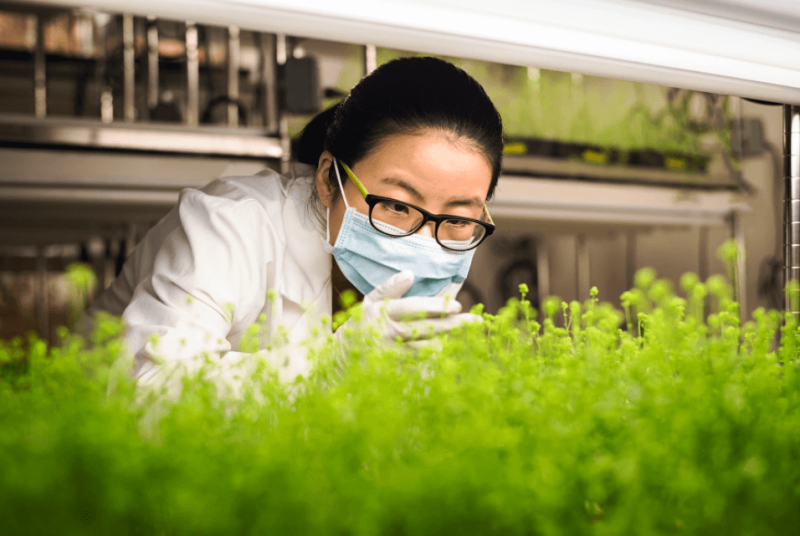Edible plant-based vaccines could revolutionize how we fight diseases because they are cheaper, easier, and quicker to produce than traditional vaccines.
And the most visible potential benefit, at least for patients: no more needle jabs.
How we make vaccines now
By now, we’re all familiar with the words Pfizer and Moderna — the two biotech companies that produce the most popular shots for COVID-19. These two vaccines are mRNA-based, and they work by delivering a piece of the virus’ genetic code, which triggers an immune response. This way of making vaccines is pretty new, and Pfizer recently became the first fully FDA approved mRNA vaccine.
A more traditional way of triggering an immune response is with an inactivated vaccine, like the flu shot. This type uses dead whole viruses — killed (“inactivated”) with chemicals or chopped up into pieces, or both.
To make inactivated vaccines, scientists will use a live organism, such as chicken eggs, yeast to grow the virus.

Most antigens for the flu vaccines are grown in chicken eggs. First scientists inject the flu virus into a fertilized egg and then they let the virus replicate (as it would in human cells). Next, they extract the virus-filled egg white. Finally, they destroy the part of the virus that infects humans — and to make sure it’s dead, they go through months of quality-control tests.
The problem
Inactivated vaccines have been around for decades and they’ve proven to be pretty effective. However, they’ve also proven to be time-consuming and expensive to make. According to the CDC, every year it takes six months or more to produce a large quantity of the flu vaccine.
mRNA vaccines, on the other hand, are cheaper and quicker to make. However, they still haven’t been able to produce enough doses for everyone who needs one. One of the biggest obstacles of both mRNA vaccines is that they require cold storage — a requirement puts them out of reach in many parts of the world.
How plant-based vaccines are made
Plant-based vaccines are produced in a similar way to inactivated vaccines — but instead of a chicken egg, the antigen is grown in a plant cell. And, instead of growing a whole virus, the plant cells just grow the part of it that the immune system recognizes, so there’s no live virus around to have to kill.
Vaccines made from plants aren’t a new concept (there’s a couple for COVID-19 and the flu in clinical trials), but they also aren’t common. There’s only one plant-based vaccine that’s FDA-approved for humans, for Gaucher disease, a rare genetic disorder.
Benefits of plants
The process of growing plant vaccines is called “molecular farming,” and it could provide us with a cheaper and scalable alternative to traditional vaccines, while also being more accessible than mRNA vaccines.

Cheaper: Plants only require light, water, and soil, so generally speaking it’s cheaper to grow plants than animals. Greenhouses, according to the authors, are cheaper than the chicken farms and bioreactors needed to incubate the eggs.
Faster: We’re talking weeks, not months. A batch of a plant-based COVID-19 vaccine that’s currently in clinical trials was produced in just 3 weeks.
Accessible: These vaccines can be easily stored and transported at room temperature.
Edibles
So far, plant-grown vaccines have been delivered the usual way — with a shot. But extracting, isolating, and purifying the antigens for an injection is still a time-consuming process, whether they’re grown in an animal or plant.
So to really simplify the process, some scientists argue that we should go straight to eating the plants. They argue that administering plant-based vaccines orally could lead to an even cheaper and faster vaccine development process.
Edible plant vaccines are currently in the preclinical stage, so a lot more research is needed before we’re able to consume snack-sized vaccines. One thing is for sure, though — having a wider range of vaccine options will help us eradicate deadly diseases more quickly.
Amanda Winkler is the managing editor at Freethink. Prior to joining Freethink, she was a freelance filmmaker focused on issues related to foreign policy and the U.S. military. Her work has been featured on PBS and in film festivals. Before that, she was a video producer for Reason Magazine. Find Amanda on Twitter @acwinkler
A version of this article was originally posted at Freethink and is reposted here with permission. Freethink can be found on Twitter @freethinkmedia































